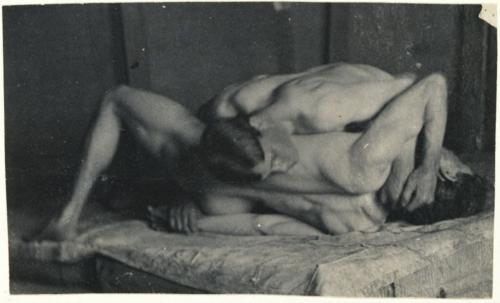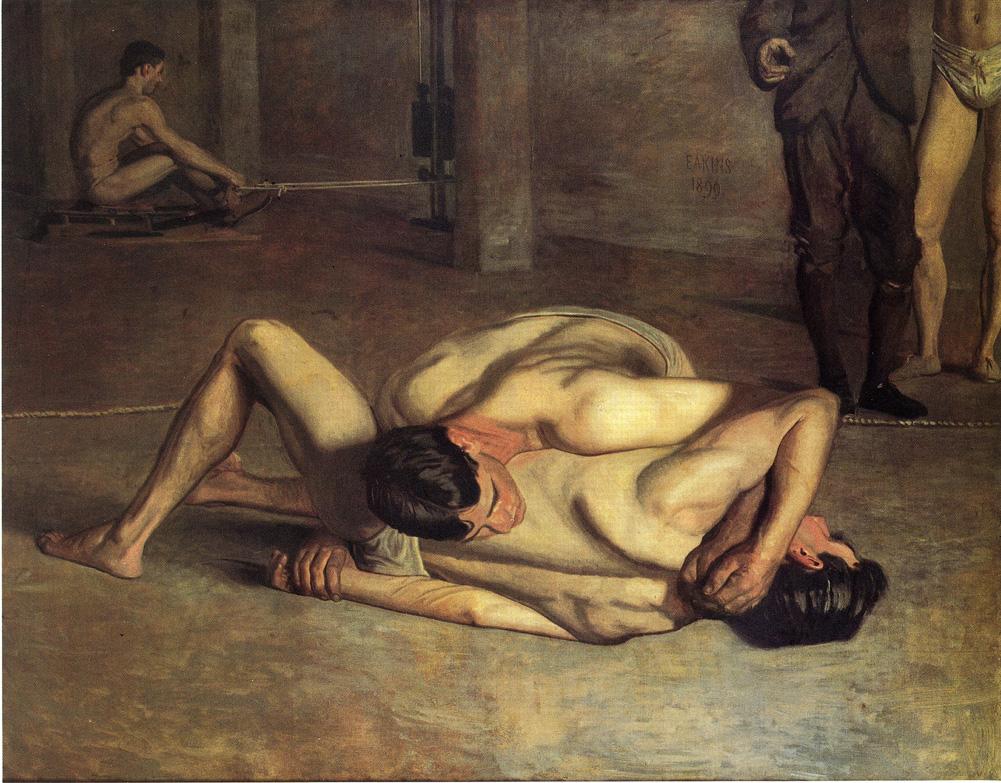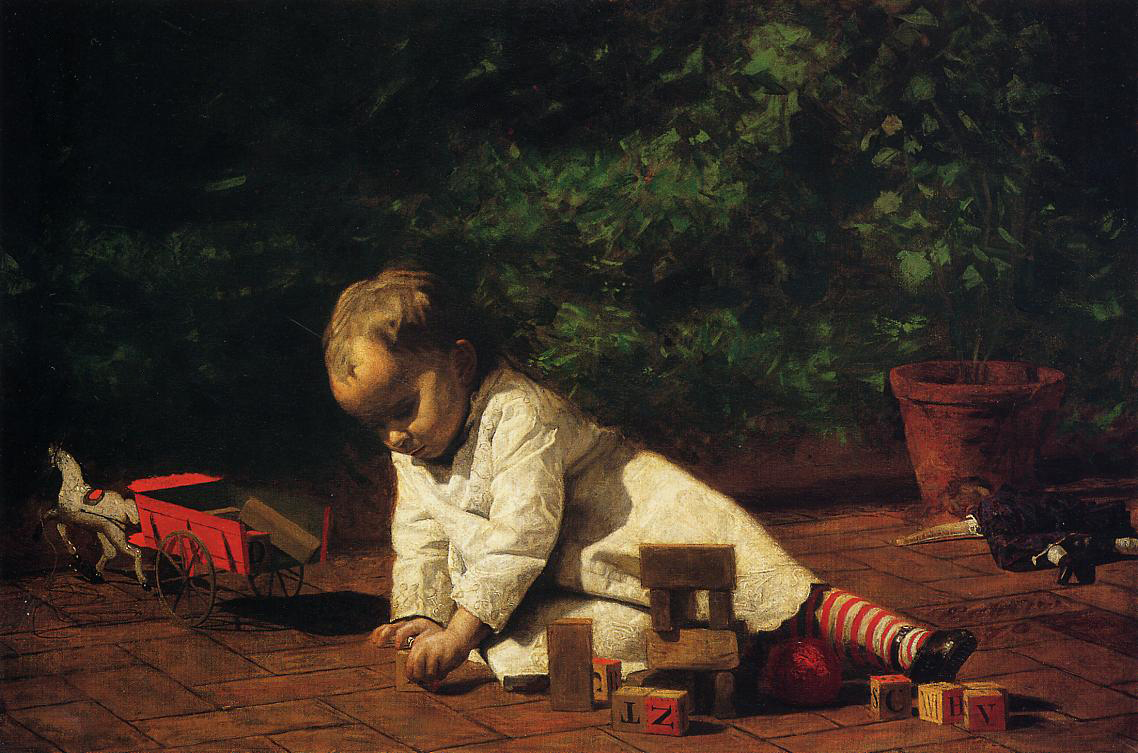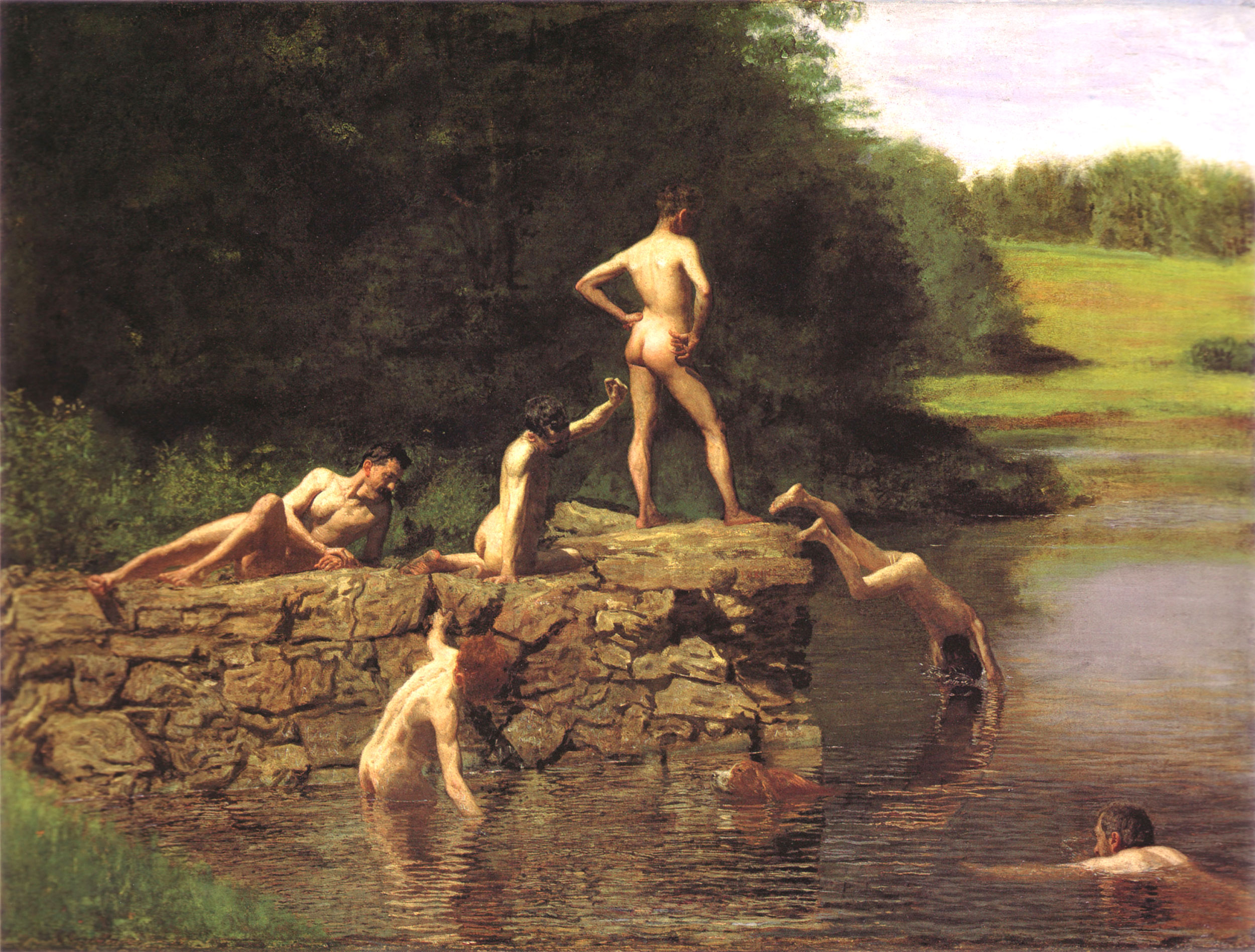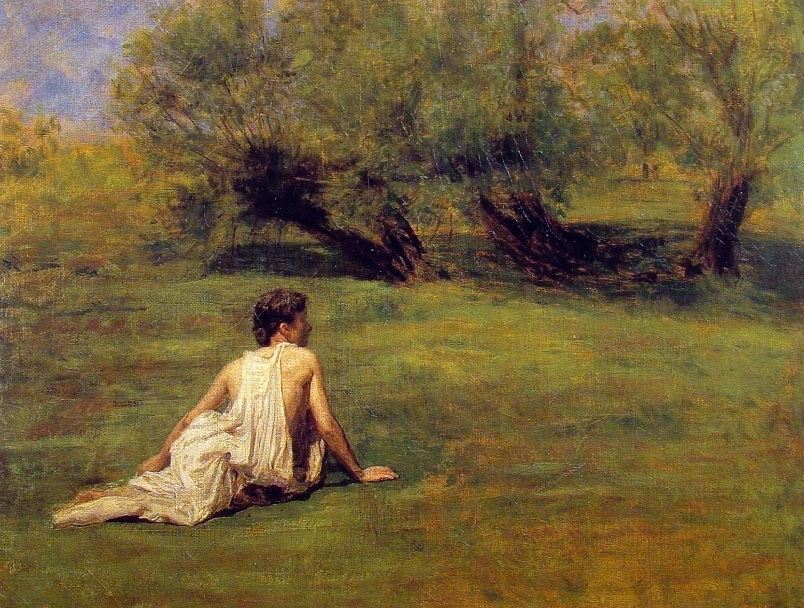Sep 11, 2014 | art history, happenings, museums, painting, sculpture, Taubman Museum of Art
Bill Rutherfoord has been painting surreal scenes of animals and people in stark, arresting actions for decades, but his gallery at the Taubman Museum is the product of eight very reflective years spent working in the basement of his Roanoke home. Allegory of No Region is comprised of 11 huge, terrifying works that merge folk, myth, metaphor, science and symbolism at once.
This collection can’t be fully appreciated without understanding the story within the paintings, and I don’t think I can explain it any better than the Museum itself:
“The reclaimed character Brer Rabbit leads the viewer on an epic journey across three centuries of heroism and trickery both comic and tragic ultimately creating historical and contemporary allegories and conundrums that lead to an investigation of the very nature of identity, culture and history – personal and public, regional and national, high and low.”


Each painting’s placard includes a diagram letting the viewer know the exact meaning behind the work, so that everyone can follow the twists and turns in Brier Rabbit’s path as he travels from the 18th century to present time, tackling every topic from Jamestown to the BP oil spill.
A lot of the symbolism deals with the New York School of art, and the break between the elites in the high-brow Northeastern art market and the equally legitimate styles being pursued in the rural U.S. Rutherfoord’s own career battled against the art market’s supposed trendiness, remaining figurative and refusing to bend to the ever-popular abstract styles.



The gallery’s second room contained two collections of Rutherfoord’s past work to contextualize the Allegory of No Region series. The first was a set of Apocalypse paintings inspired by the Bible’s Book of Revelation, but my favorite was the set of five painted wood sculptures completed between the early ’80s and the early ’90s. Their silhouettes’ have life and rhythm but their small size and abstract faces make them feel like dolls propped up.
“Wacky Woods” takes Dr. Suess seriously — a one-eyed cartoon lumberjack BZZZing his chainsaw.


“Guitar,” 1984


“Wacky Woods,” 1991


This show closes on Saturday, September 13th so if you live in Virginia, make the trip this weekend!
For more on Bill Rutherfoord, check out this incredible profile video created about him and this exhibit by William Sellari on Vimeo:
Jun 16, 2014 | art history, guest post, painting
by Alison Lansky
Paul Cézanne was a French artist perhaps most famous for his ‘Bathers’ and who is often credited with having bridged the gap between Impressionism in the late 19th Century and Cubism in the early part of the 20th Century. Like many artists, his work can be defined by a number of distinct periods each with its own style. The four most commonly recognised periods in terms of Cézanne’s work are his post-impressionism period; his cubism period; his impressionism period; and his modern art period. However, the period that I want to look at today is his impressionist and post-impressionist period and more specifically how his work impacted the impressionist movement.
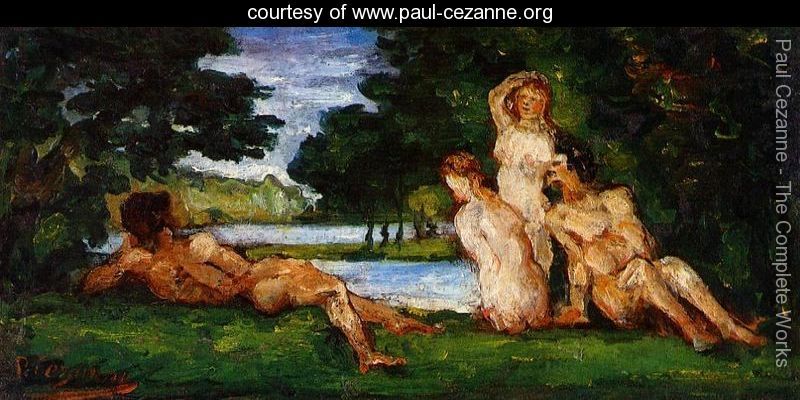
What Is Impressionism?
Impressionism was a style of painting which emerged in France during the 1860’s. The main characteristics of the impressionist style were the need to capture a visual impression of the moment and the effects of light and color. It has often been said that impressionists are more concerned with capturing the feeling or the experience rather than creating an accurate reproduction of a scene. Nature played a big role in the impressionist movement with most artwork focused on the outdoors. One of the hallmarks of an impressionist painting is the use of short brush strokes and thickly applied paint along with a lack of fine detail. If you want to try your hand at impressionist style painting then you should be able to find a selection of useful books at most leading art supplies stores. There are several interesting titles available from JacksonsArt.com.
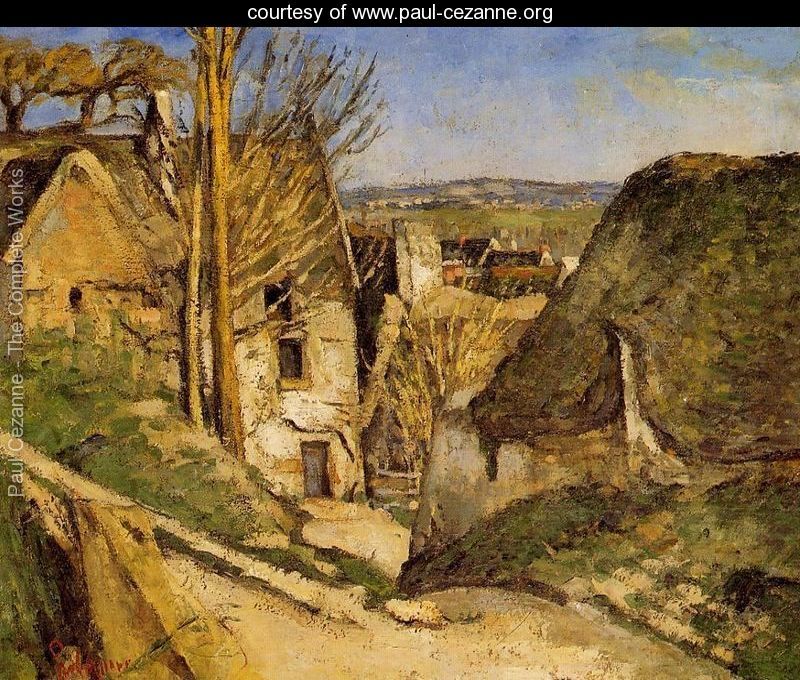
Cézanne’s Impressionist and Post-Impressionist Works
Cézanne’s impressionist period was at its peak in the 1870’s. Some of his most famous impressionist works include ‘House of the Hanged Man’ and his series of ‘Bathers’. While Cézanne exhibited his paintings alongside other impressionists such as Claude Monet, over time his style began to change setting him apart from the other artists of the time. He was plagued by the feeling that the impressionists were lacking in one of the most important hallmarks of classical art : structured composition.
This deviation from the normal impressionist style was met wit criticism. Where other impressionists captures a delicate and sensuous feel in their work, any felt that Cezanne’s brush strokes were forced or strained due to his insistence on creating a more unified structure between color, surface and brush strokes. It was Cézanne’s experimentation with planes of color which led to other artists including Pablo Picasso being influenced to create the style we now know as cubism. It is because of this that Paul Cézanne is often thought of as one of the fathers of modern art.
Overall, it is clear that although Cézanne initially came under fire upon deviating from what was expected in the art world at the time to the point where he was routinely rejected by the Salon, his distinctive style certainly developed over time and went on to influence great artists including Manet, Picasso and Renoir to develop a more modern style. In fact, Pablo Picasso is quoted as having said, ‘As if I didn’t know Cezanne! He was my one and only master. […] It was the same with all of us – he was like our father.’ Modern art would not be where it is today without the likes of visionary artists like Paul Cézanne.
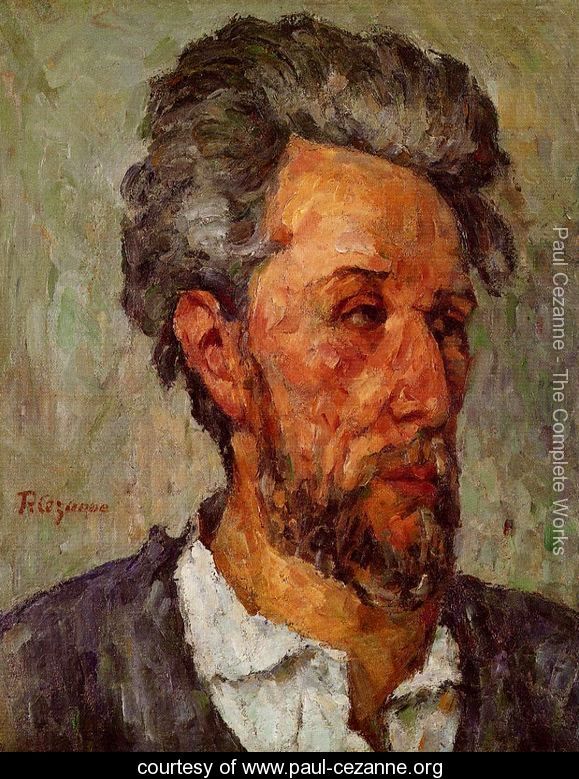
–
Alison Lansky loves blogging and art. She is also the mother of 2 beautiful children – her own works of art!
Jan 28, 2014 | art history, interviews, sculpture
An artist from Athens, Greece, Teodosio Sectio Aurea paints with shadows, using sculpture and light to recreate masterpieces in negative space. He takes us through a tour of art history using different types of sculpture to match each shadow — thick black metal for “Guernica,” a cherry blossom tree forms a woman in “Akina – spring flower,” and DNA beads form the “Vitruvian Man.”
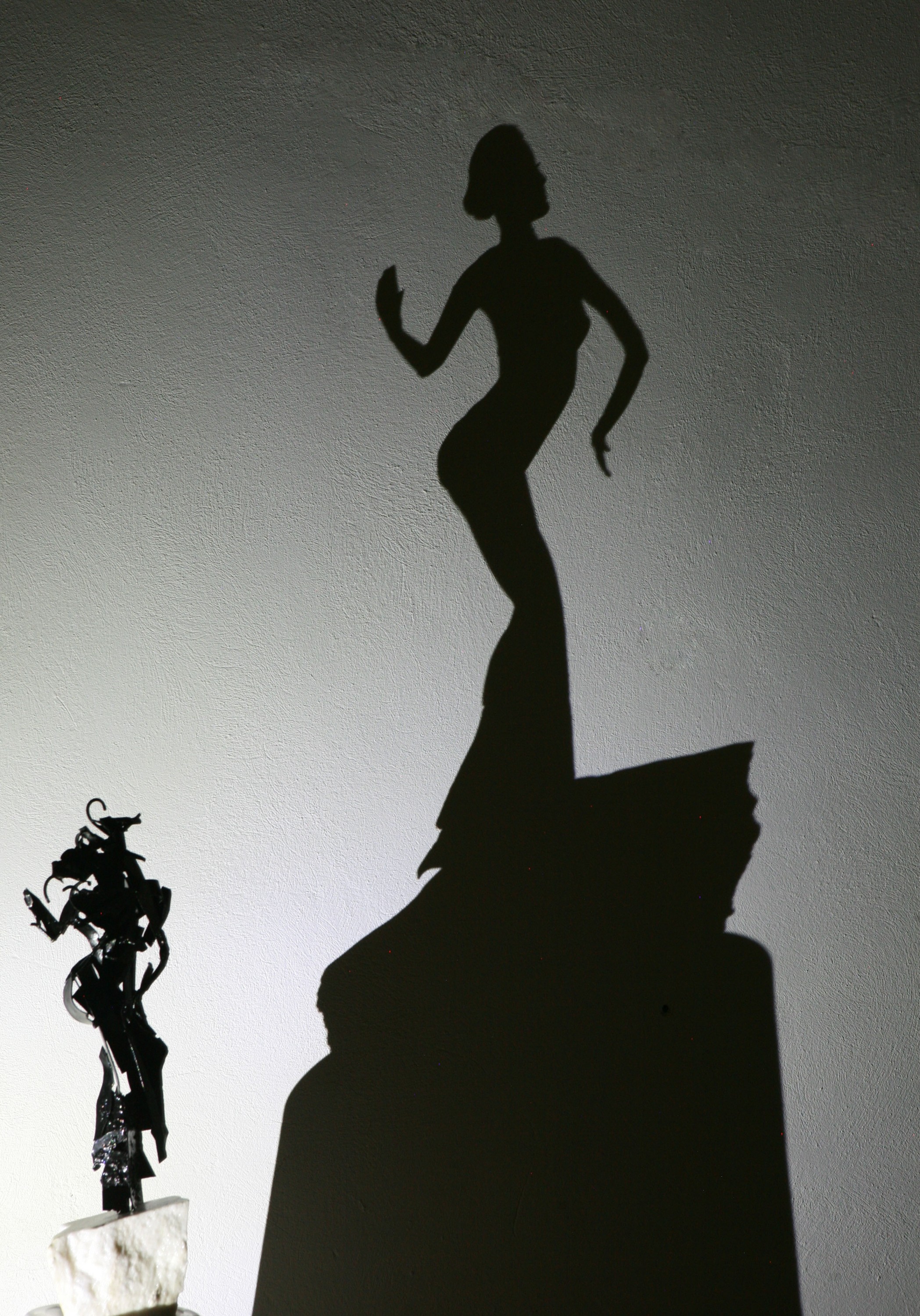
How does living in Athens affect your art?
I am not an Athenian or a Greek, but a citizen of the world. Socrates, from Plutarch said Greece is the most beautiful places on Earth.
When did you first start experimenting with shadow art?
I started my shadows one year ago, I just sort of ”woke up” you know?
How long does it typically take you to work with the negative space?
Some shadows are difficult, but nothing is impossible.
What’s one of your favorite quotes about art?
“In art we trust.”
Who’s are a few of your art idols?
Dali, Pollock, Kandinsky, Da Vinci, and again Dali :)))))




For more of Teodosio Sectio Aurea’s work, see his website and Facebook page.
Aug 1, 2013 | art history, sculpture
Antonio Corradini lived from 1668 until June 1752, and he worked as a Rococo sculptor in Venice. There’s not a lot known about him, but he’s most famous for his veiled women, and it’s not hard to see why.
Her smooth skin shines right through the thin ripples of the veil resting softly – it spills off noses and ears like tiny waterfalls of marble. But the eyes can always be seen so clearly, closed against the veil pressed against them.
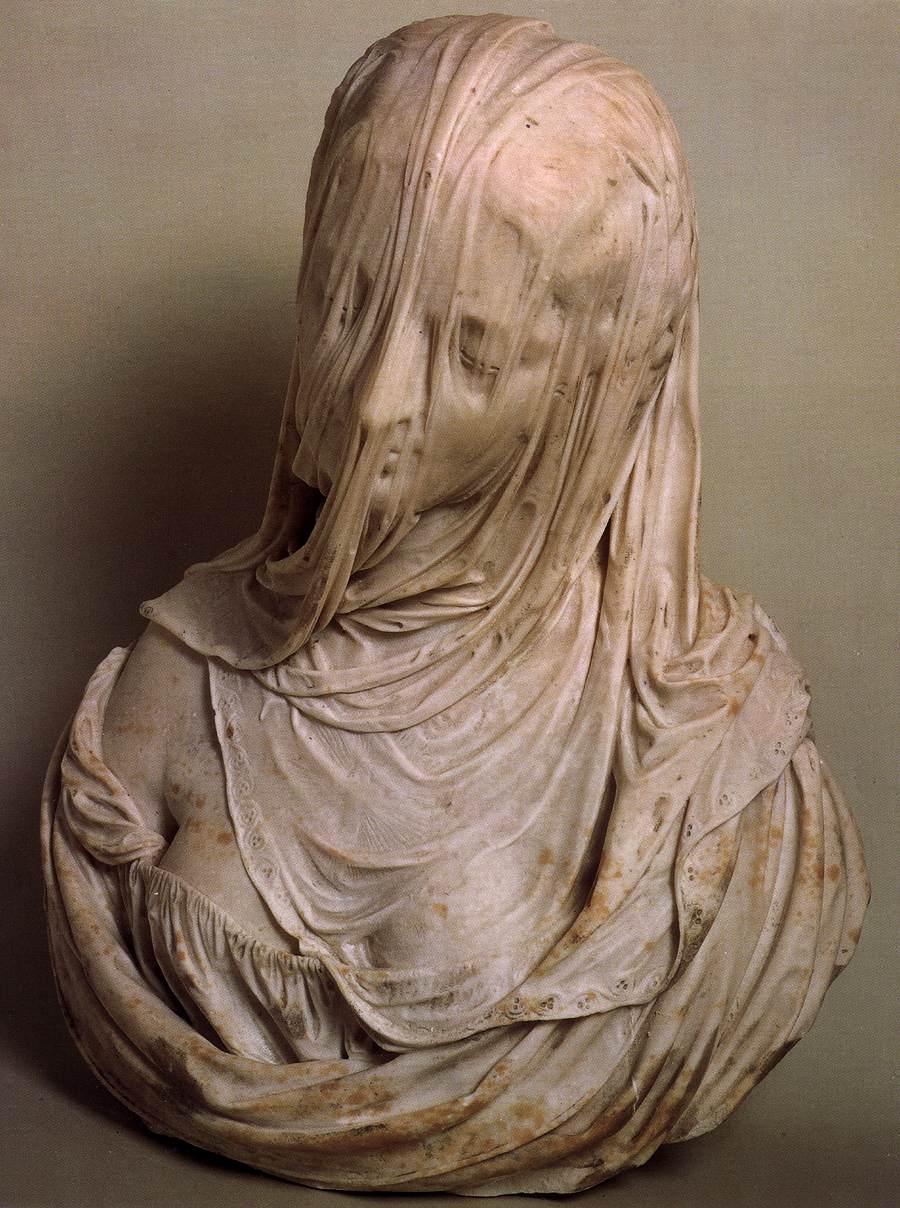
Bust of a Veiled Woman (Puritas), 1717-25
Marble
Museo del Settecento Veneziano, Ca’ Rezzonico, Venice
source.
Corradini played a huge role in solidifying the role of sculptors as ‘artists’ in the early 18th century. In 1723 he is supposed to have been the first person to legally separate the professions of sculptors and stonemasons, creating a school for sculptors and developing it as an official artistic profession.
His “Portrait of Modesty” (below) lives in the Naples museum, Cappella Sansevero, and her posture and accessories make it look like she was made for a church, even though she’s nearly naked through that thin thin veil – standing casually beautiful with eyes closing.
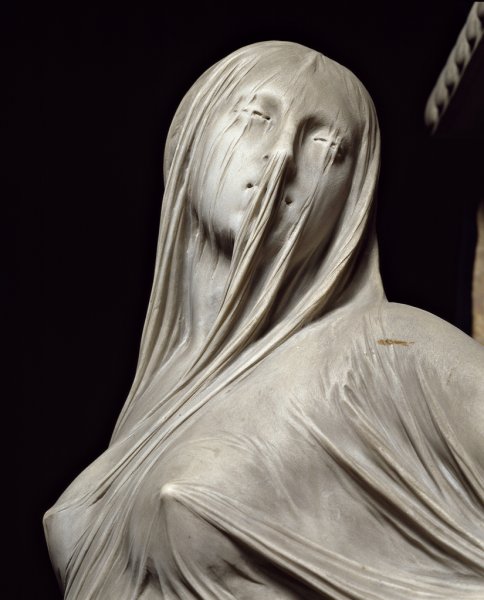

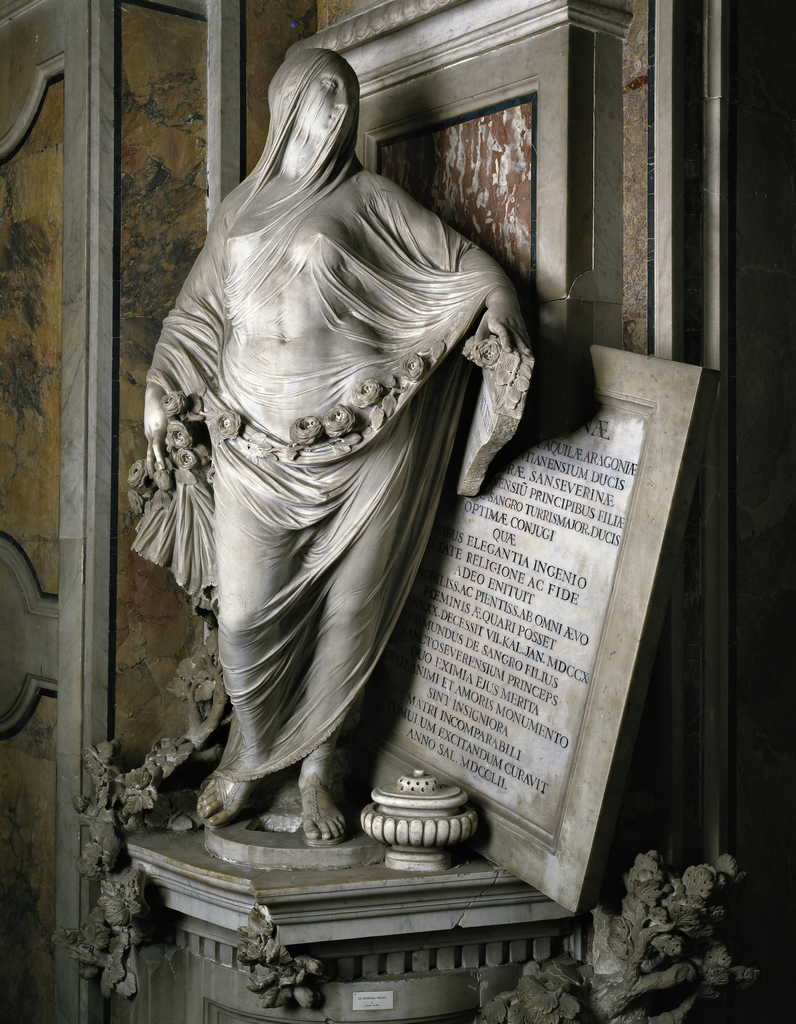
“Modesty,” 1751
Marble, Cappella Sansevero, Napoli
source.
Full disclosure: all info from Corradini’s Wikipedia page.
Jul 30, 2013 | apropos//ts, art history, art where
In Greek and Roman mythology, Daphne was a nymph whose beauty attracted the attention of the god of music, poetry and a bunch of other things: Apollo. In Ovid’s Metamorphoses, Apollo falls in love with her because the god of love, Eros, wants to get back at him for making fun of his archery skills (a little much right?). He shoots Apollo in the heart with an arrow made of gold to make him fall in love, and he shoots Daphne with a lead arrow to incite hate, pitting the two against each other and driving Apollo crazy. Eventually Apollo is chasing Daphne so she calls out to her mother Gai who rescues her by transforming her into a laurel tree.
But that’s not the only ancient tale about people turning into trees. Ovid tells another story in Metamorphoses VIII about an old couple, Baucis and Philemon, who were the only ones in the town to invite the disguised gods, Zeus (Greek)/Jupiter (Roman) and Hermes/Mercury, into their home even though they were much poorer than their neighbors. They were taken up to a mountain by the gods, who flooded the town once they were safe, and their house was transformed into a temple. They were made the guardians of the temple, and were also granted their request to die at the same time as the other. When they did die, they was transformed into a pair of intertwining trees, one oak and one linden.
But from the looks of it, there are probably a lot more reasons why people turn into trees. Maybe trees can even turn into people, Pocahontas-style.

source.

source.
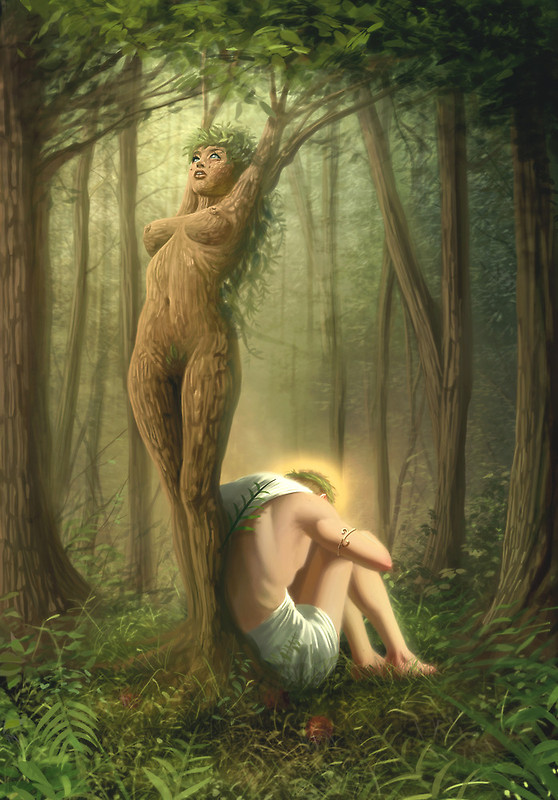
source.
4. artist unknown
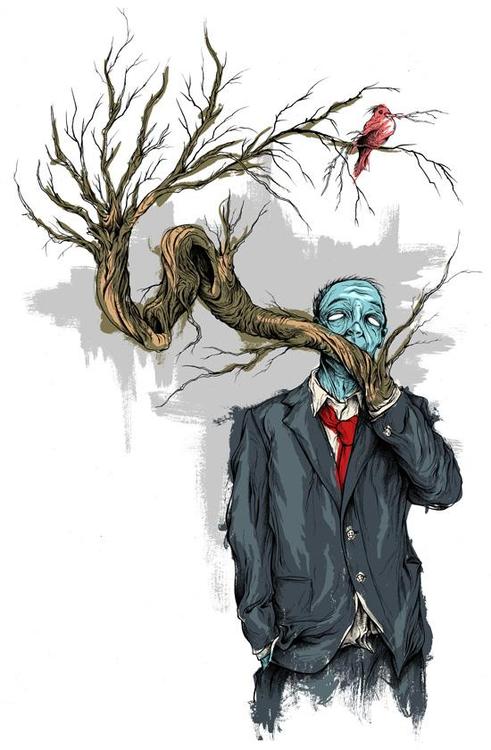
source.
5. “Apollo Pursuing Daphne” by Birney Quick (1912-1981)

source.
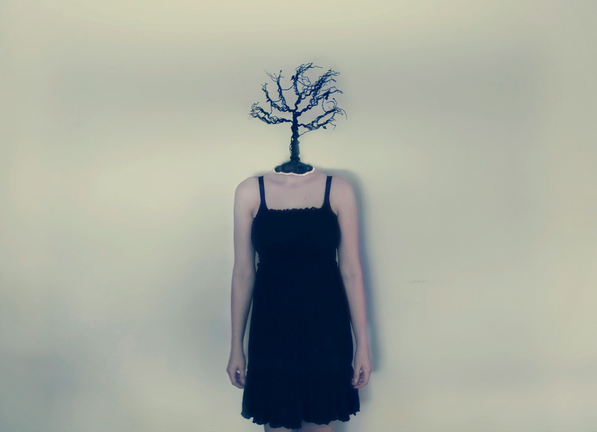
source.
7. “Philemon and Baucis” by Matheus Jean, 1619
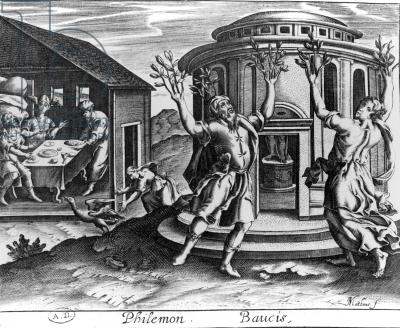
source.
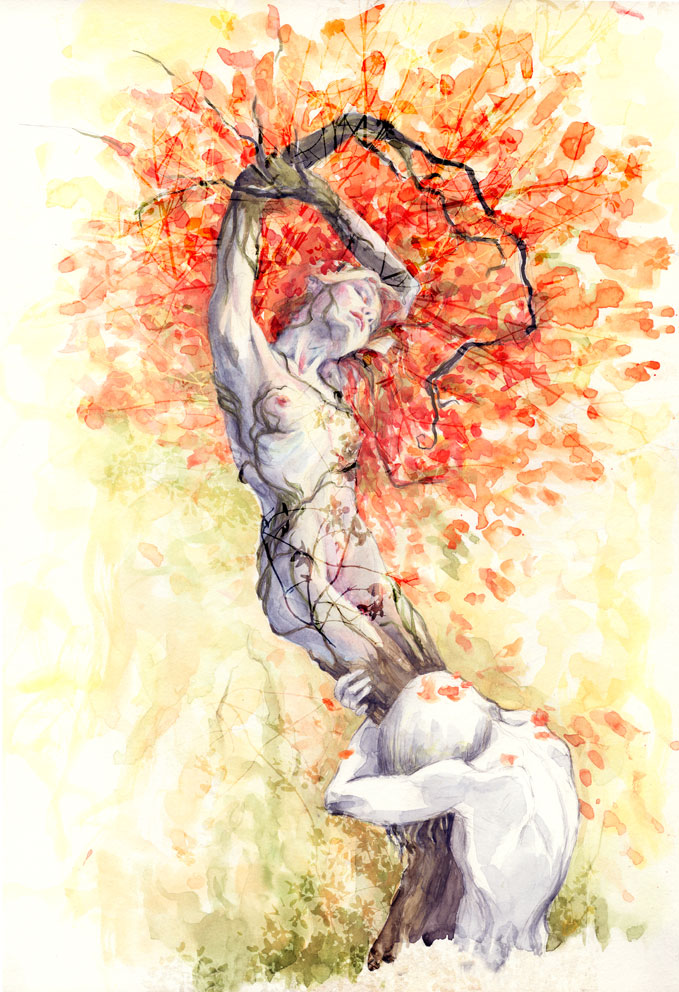 source.
source.
9. artist unknown
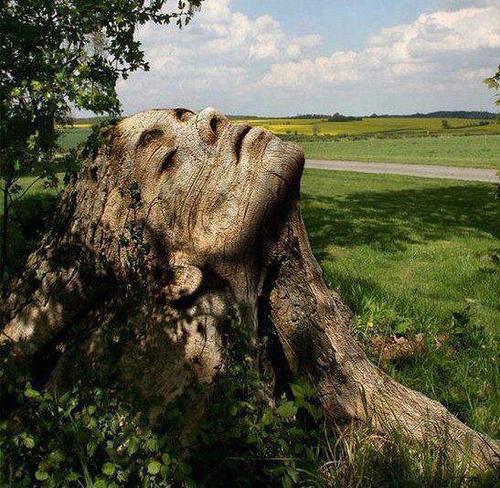
source.
10. Gian Lorenzo Bernini’s “Apollo and Daphne,” 1622-1625
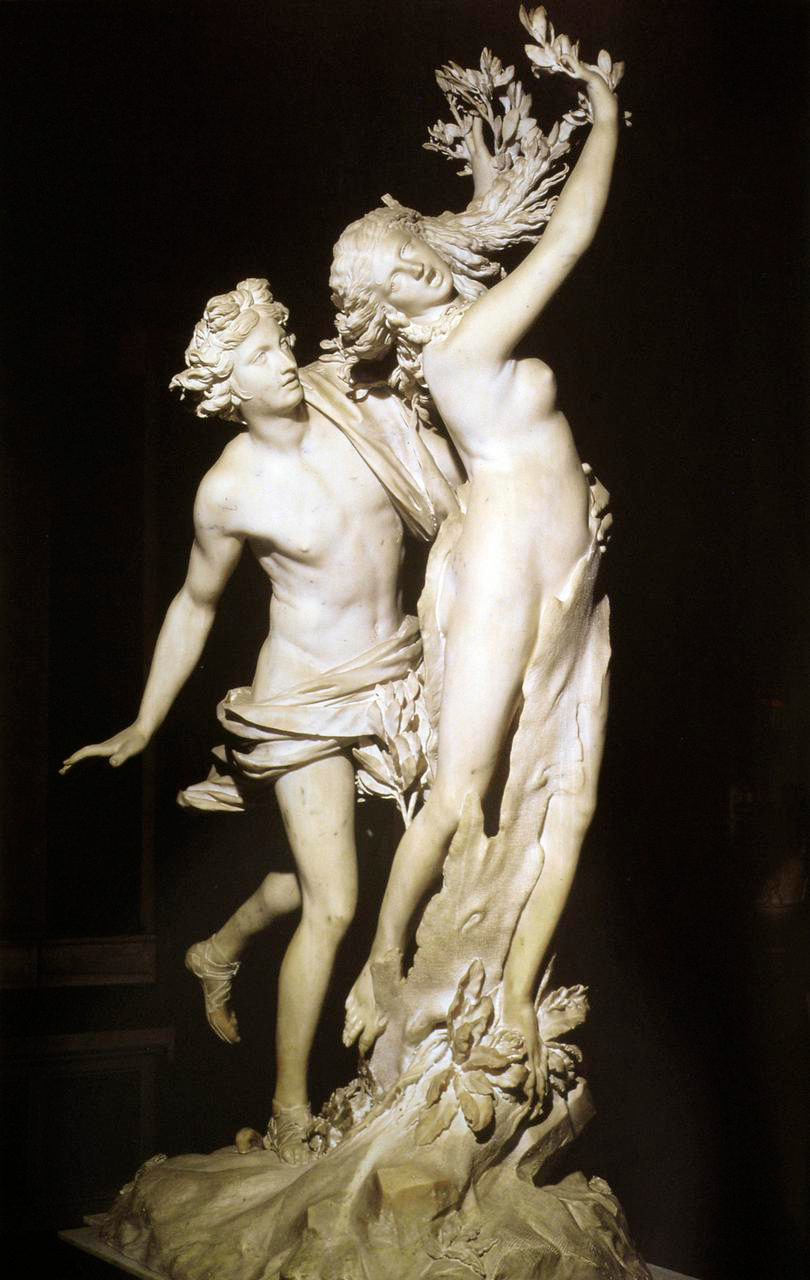
source.
11. artist unknown
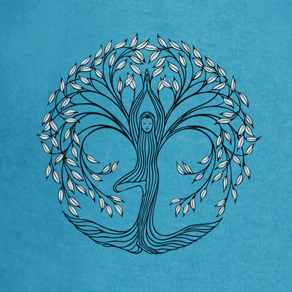
source.
12. “Baucis and Philemon,” artist unknown
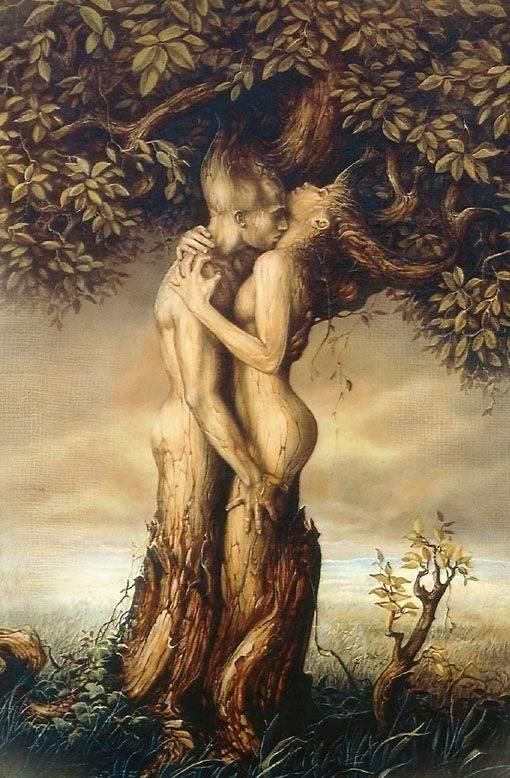
source.
Know any of the artists featured above? Is your work up there? Email me and let me know!
And if you have your own transforming tree art to add, please comment!
Jul 25, 2013 | art history, painting, photography
Thomas Eakins lived from 1844-1916, and spent the majority of that time as an artist – painting, photographing, sculpting, and teaching others the craft. He was an American realist painter whose style is remembered for its loose, rich color. Eakins used photography, still a relatively new technology at the time, to study the details of a body in motion as it travels through space – a practice now regarded as one of his most important innovations.
“Strain your brain more than your eye… You can copy a thing to a certain limit. Then you must use intellect.”
-advice to his art students; quoted in Lloyd Goodrich, Thomas Eakins (1933)
Photography

Motion study: Male Nude, Standing Jump to Right, 1885.
image source
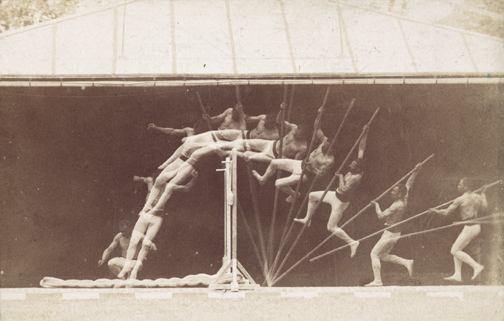
Motion Study: George Reynolds, nude, pole-vaulting to left, 1885
image source
He explored the heart of American life through portraiture, but didn’t receive recognition until late in life because of his role as a controversial figure when it came to the sexes. His studies of the male nude were often regarded as homoerotic, and later made him a major figure of art historical sexuality studies in the 1990s.
He insisted on teaching men and women the same way, using male models in female classes and vice versa, but was also accused of abusing female students. The scandals cut his success short, and his influence in the history of art was only realized after his death.
Painting
For more info about Thomas Eakin, see the artist’s Wikipedia page.






































